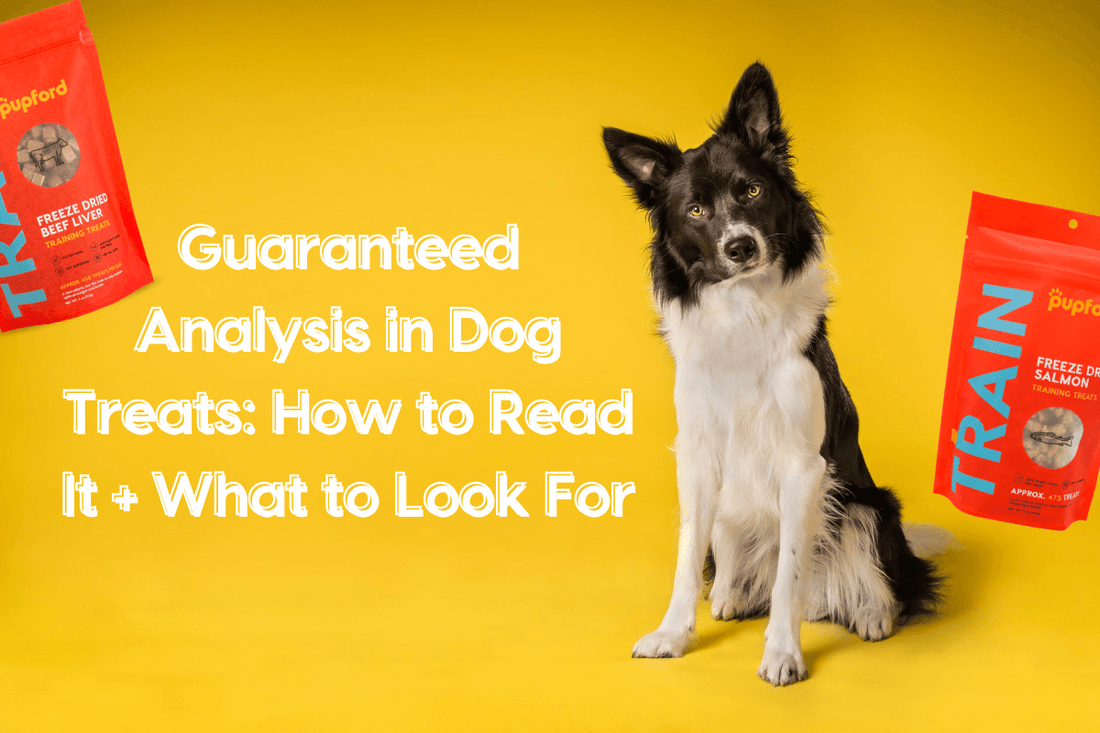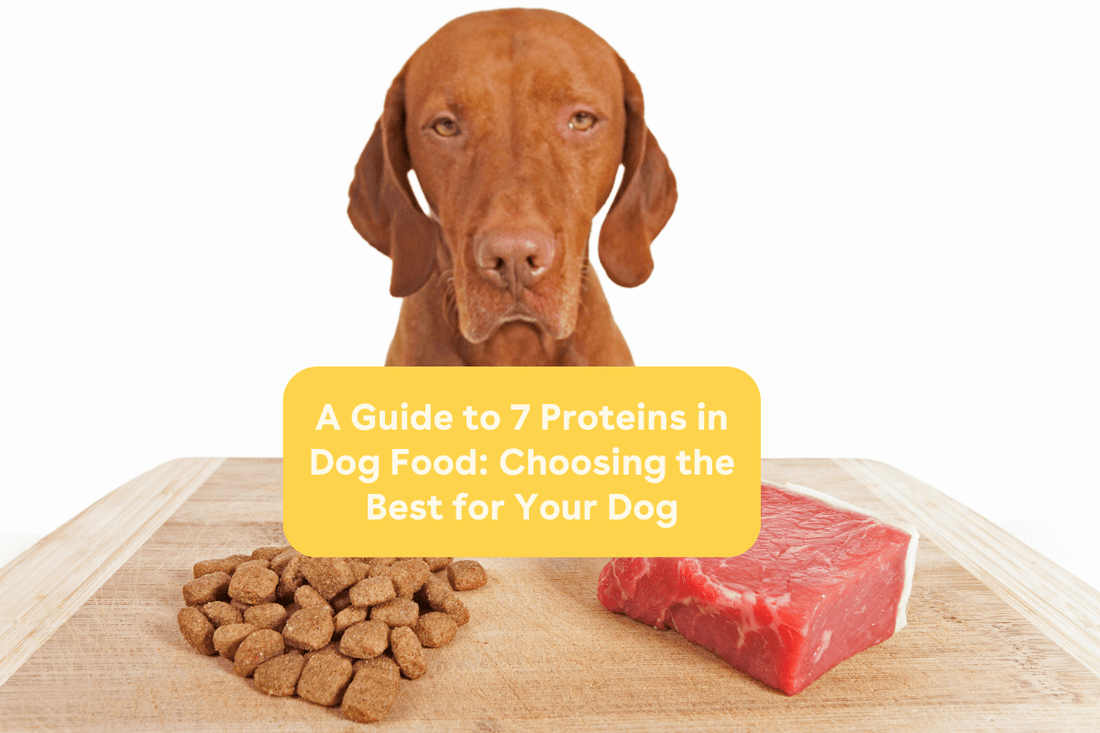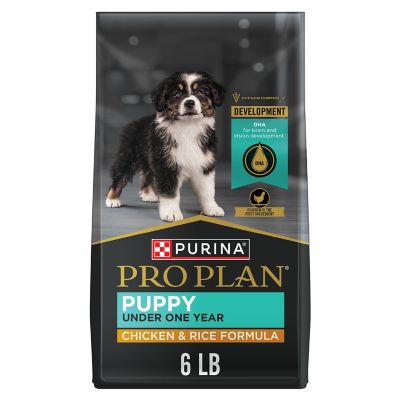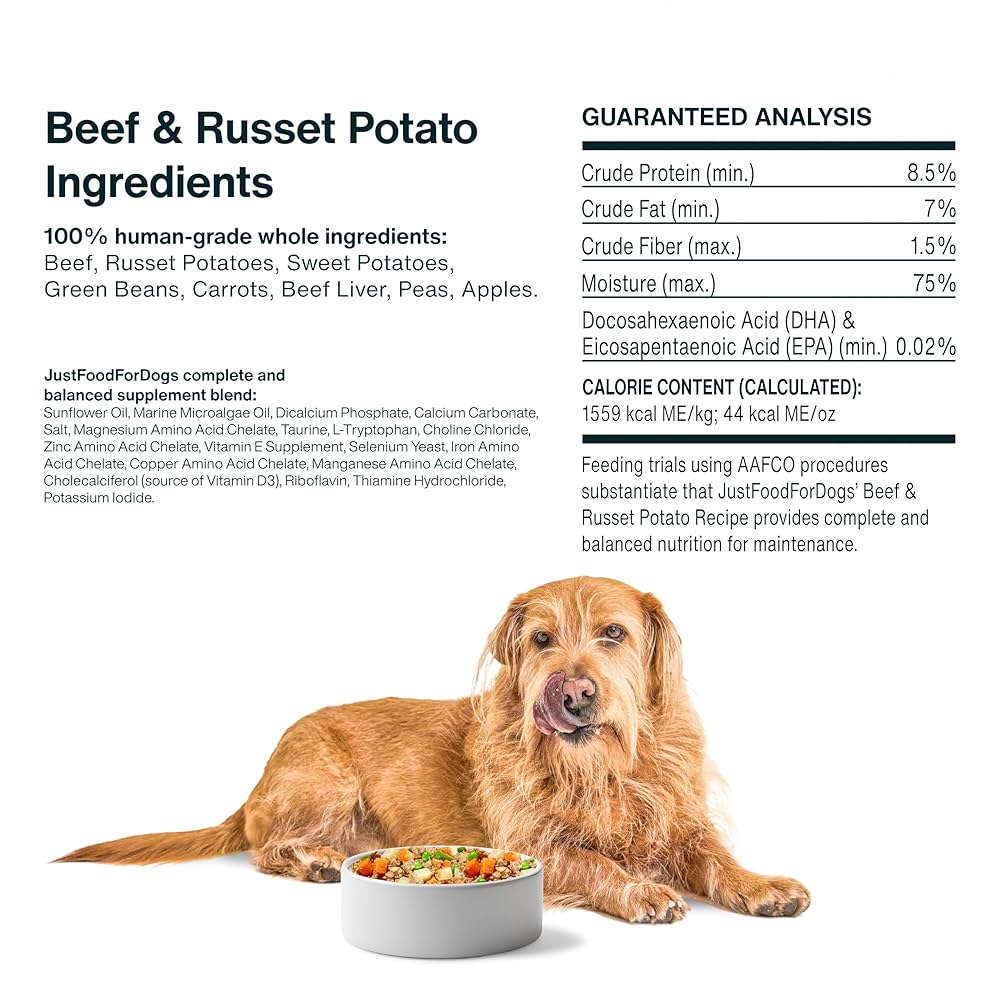Are you making homemade meals for your dog but unsure if they’re getting the right nutrients? Knowing how to calculate the nutritional value of your dog’s food is key to keeping them healthy and happy.
Without this knowledge, you might unintentionally miss important vitamins or overload certain ingredients. This guide will show you simple steps to measure and balance your dog’s meals, so you can feed with confidence and give your furry friend the best care possible.
Keep reading to discover how easy it can be to get your dog’s nutrition just right.

Credit: truthaboutpetfood.com
Ingredients To Include
Choosing the right ingredients for your homemade dog food is crucial to ensure your pet gets balanced nutrition. Each ingredient plays a specific role in supporting your dog’s health, energy, and overall well-being. Let’s break down what you should include to make your recipe both tasty and nutritious.
Proteins
Proteins are the building blocks of your dog’s muscles, skin, and immune system. High-quality animal proteins like chicken, turkey, beef, and fish are excellent choices. You can also add eggs or cottage cheese for variety and extra nutrients.
Think about your dog’s activity level. A working dog will need more protein than a couch potato. Have you noticed how your dog responds to different protein sources? Adjust accordingly.
Carbohydrates
Carbohydrates provide energy and fiber that help with digestion. Brown rice, sweet potatoes, and oats are great carbohydrate sources to add. Avoid fillers like corn or wheat that can cause allergies in some dogs.
Try mixing different carbs to see which ones your dog digests best. Do you find your dog gets more energetic or has better digestion with certain carbs? Keep track of these reactions.
Fats
Fats are essential for healthy skin, a shiny coat, and brain function. Include healthy fats from sources like fish oil, flaxseed oil, or chicken fat. Remember, too much fat can lead to weight gain, so measure carefully.
Have you noticed changes in your dog’s coat or energy when you add fats? These small adjustments can make a big difference in their health.
Vitamins And Minerals
Vitamins and minerals support everything from bone health to immune defense. Vegetables like carrots, spinach, and pumpkin add these important nutrients naturally. You may also need to supplement with calcium or other minerals depending on your recipe.
Check with your vet about specific supplements your dog might need. Have you ever tried adding a new vegetable and noticed improvements in digestion or energy? Keep experimenting with safe options.
Measuring Ingredients Accurately
Measuring ingredients accurately is key to making sure your homemade dog food is both nutritious and balanced. If your measurements are off, even by a little, it can affect the overall nutritional value your dog receives. Paying close attention to the amounts you use helps you control calories, protein, fat, and other essential nutrients precisely.
Using Kitchen Scales
Kitchen scales are the most reliable tool for measuring dog food ingredients. Unlike cups or spoons, scales give you the exact weight, which is crucial for nutrients that need precise amounts. I once switched from measuring by volume to weighing everything, and it made a huge difference in my dog’s energy and health.
Digital scales are affordable and easy to use. Simply place your bowl on the scale, zero it out, and add each ingredient one by one. This method reduces guesswork and ensures consistency every time you prepare the meal.
Volume Vs Weight
Measuring by volume (cups, tablespoons) can be misleading because ingredient density varies. For example, a cup of chopped chicken weighs differently than a cup of cooked rice. This difference can throw off your calculations of protein, fat, or carbs.
Weight measurements eliminate this problem. If a recipe calls for 100 grams of chicken, you know exactly how much protein and fat you’re adding. If you only use volume, you might overfeed or underfeed certain nutrients without realizing it.
Consistency Tips
Maintaining consistency in your measurements helps keep your dog’s diet balanced every day. Use the same scale and measuring containers to avoid variations. It’s easy to overlook small changes that add up over time.
- Weigh ingredients at the same moisture level, such as cooked versus raw.
- Record your measurements in a food diary to track what works best.
- Double-check your scale’s calibration regularly to avoid errors.
Are you ready to commit to precise measuring? It may seem tedious, but your dog’s health depends on it. Once you get into the habit, it becomes second nature and your furry friend will thank you with better vitality.
Finding Nutritional Data
Finding accurate nutritional data is key to making healthy homemade dog food. Knowing the nutrients in each ingredient helps balance your dog’s diet. It also prevents missing vital vitamins and minerals. Gathering this data requires careful searching from trusted sources.
Reliable Sources
Start with expert-backed books and veterinary guides. These contain tested nutritional information for pet foods. Look for publications by animal nutritionists or reputable pet organizations. Avoid random blogs or unchecked websites. Reliable sources ensure you get correct nutrient values for each ingredient.
Nutritional Labels
Food packaging labels offer quick nutrient facts. Check labels on meats, grains, and vegetables used in recipes. They list calories, protein, fat, fiber, and other key nutrients. Compare labels to estimate the total nutrition of your homemade mix. Keep labels handy for accurate measurements.
Online Databases
Use trusted online databases for detailed nutrition facts. Websites like USDA FoodData Central provide comprehensive data. Enter ingredient names to find calories, vitamins, and minerals per serving. These databases update regularly and cover many food types. They help calculate precise nutrient totals for your recipes.
Calculating Macronutrients
Calculating macronutrients is crucial for balanced homemade dog food. Macronutrients include protein, carbohydrates, and fats. Each plays a vital role in your dog’s health. Understanding their amounts helps you create meals that meet nutritional needs. Precise calculations prevent deficiencies and excesses, promoting overall well-being.
Protein Content
Protein is essential for muscle growth and repair. It supports your dog’s immune system and energy. Calculate protein by adding the grams from all protein-rich ingredients. Common sources include meat, eggs, and dairy. Check nutrition labels or use a reliable database for accuracy. Aim for about 18-25% of the total meal weight in protein. Adjust depending on your dog’s age, size, and activity level.
Carbohydrate Levels
Carbohydrates provide energy and fiber for digestion. They come from grains, vegetables, and fruits. Sum the carbohydrate grams from each ingredient. Use nutritional information from packaging or trusted resources. Carbs should make up about 30-50% of the meal. Avoid too many simple carbs to keep your dog’s blood sugar stable. Include whole grains and fiber-rich veggies for best results.
Fat Amounts
Fats supply concentrated energy and support skin and coat health. Sources include oils, fatty fish, and animal fats. Add the fat grams from all components to find total fat content. Fat should be around 10-15% of the meal. Be cautious with fat to prevent weight gain. Include omega-3 and omega-6 fatty acids for anti-inflammatory benefits.
Assessing Micronutrients
Assessing micronutrients is a crucial part of calculating the nutritional value of homemade dog food. These tiny nutrients, though required in small amounts, have a big impact on your dog’s overall health. Without the right balance of vitamins and minerals, your dog might miss out on essential support for their immune system, bones, and energy levels.
Essential Vitamins
Vitamins support many body functions, from vision to skin health. Pay close attention to vitamins A, D, E, and the B-complex group when planning your dog’s meals.
- Vitamin A:Helps with vision and skin. Found in liver and carrots.
- Vitamin D:Supports bone health by aiding calcium absorption. Found in fish oils and egg yolks.
- Vitamin E:Acts as an antioxidant protecting cells. Found in vegetable oils and leafy greens.
- B Vitamins:Important for energy and metabolism. Found in meats, eggs, and whole grains.
Have you measured how much of these vitamins your recipes actually include? Using nutrition calculators or apps can give you a clearer picture. You want to avoid both deficiencies and overdoses, as too much vitamin A or D can be harmful.
Important Minerals
Minerals like calcium, phosphorus, potassium, and zinc are key players in your dog’s growth and wellbeing. They help build strong bones, maintain muscle function, and support the nervous system.
| Mineral | Role | Common Sources |
|---|---|---|
| Calcium | Bone and teeth strength | Dairy, bone meal, leafy greens |
| Phosphorus | Works with calcium for bones | Meats, fish, eggs |
| Potassium | Muscle and nerve function | Bananas, sweet potatoes |
| Zinc | Skin health and immune system | Meat, eggs, pumpkin seeds |
Have you checked the balance of calcium to phosphorus? Dogs need these minerals in the right ratio to avoid bone problems. Testing your homemade recipes with a vet or using trusted nutritional guides can save you a lot of guesswork.

Credit: pupford.com
Balancing The Recipe
Balancing the recipe is essential to make homemade dog food healthy and nutritious. It ensures your dog gets all the nutrients needed for good health. Each ingredient plays a role in this balance. Proteins, fats, carbohydrates, vitamins, and minerals must be combined carefully.
Without balance, homemade meals can cause health problems or nutrient shortages. Understanding how to balance the recipe helps you create meals that support your dog’s energy, growth, and overall wellbeing.
Meeting Dog’s Dietary Needs
Dogs need a mix of proteins, fats, and carbs to stay healthy. Protein supports muscles and repair. Fats provide energy and help absorb vitamins. Carbs offer fiber and energy. Vitamins and minerals keep bones, skin, and organs healthy.
Balancing these components means including:
- High-quality protein sources like chicken or fish
- Healthy fats such as fish oil or flaxseed
- Carbohydrates like rice or sweet potatoes
- Vegetables for fiber and vitamins
Adjusting For Life Stage And Size
Dogs need different nutrition at each life stage. Puppies require more protein and calories for growth. Adult dogs need balanced maintenance diets. Senior dogs benefit from lower calories and joint support nutrients.
Size matters too. Small breeds burn energy faster and need more calories per pound. Large breeds require fewer calories but need joint-supporting nutrients.
Adjust portions and ingredients to match your dog’s age and size.
Avoiding Deficiencies
Deficiencies cause health issues like poor coat, weak bones, or low energy. Common missing nutrients include calcium, phosphorus, and essential fatty acids.
Use supplements or variety in ingredients to prevent gaps. Check recipes against trusted nutritional guidelines. Regular vet checkups help spot and fix deficiencies early.
Using Nutritional Calculators
Using nutritional calculators helps pet owners find the right balance in homemade dog food. These tools analyze ingredients and give clear data on calories, proteins, fats, and vitamins. They make understanding complex nutrition simple and fast. This way, you can ensure your dog gets a healthy diet tailored to its needs.
Popular Tools
Several online calculators help measure dog food nutrition. These include:
- Pet Nutrition Alliance Calculator
- Balance IT
- Dog Food Advisor Calculator
- MyPetNutrition
These tools offer easy input options for ingredients and quantities. They instantly calculate nutrient percentages and calories. Many also suggest adjustments to improve food balance. Some calculators require registration, while others are free and open to use.
Manual Vs Automated Calculation
Manual calculation means adding nutrient values from ingredient labels yourself. You must sum proteins, fats, fiber, and vitamins manually. This method takes more time and can cause errors.
Automated calculators do these steps for you. Enter ingredients and amounts, and get instant results. They reduce mistakes and save effort. Still, double-check results to ensure accuracy. Some calculators update nutrient data regularly, making them more reliable.

Credit: tulavet.teachable.com
Tracking And Adjusting Over Time
Tracking and adjusting the nutritional value of homemade dog food is key to keeping your pet healthy. Dogs’ needs can change with age, activity level, and health conditions. Regular checks help ensure your dog gets the right nutrients. Adjustments keep meals balanced and tasty over time.
Monitoring Dog’s Health
Watch your dog closely for signs of health changes. Look for a shiny coat, steady weight, and good energy. Check for digestive issues like vomiting or diarrhea. Notice changes in appetite or behavior. Regular vet visits help track health and nutrient needs. Keep a journal of your dog’s weight and symptoms. This record guides your food adjustments.
Tweaking The Recipe
Change your dog food recipe based on health observations. Add or reduce protein, fats, or carbs as needed. Include supplements if your vet suggests them. Make changes gradually to avoid upset stomachs. Try different vegetables or grains to find what suits best. Keep track of ingredient amounts to maintain balance. Adjust portions to match your dog’s activity and weight goals.
Frequently Asked Questions
What Ingredients Affect Homemade Dog Food Nutrition Most?
Proteins, fats, and carbohydrates impact nutrition heavily. Quality meat, vegetables, and grains determine essential nutrients and energy levels. Balancing these ensures your dog’s health and vitality.
How To Calculate Calories In Homemade Dog Food?
Calculate each ingredient’s calories by weight, then sum total calories. Use online nutritional databases or pet nutrition apps for accuracy.
Why Is Balancing Nutrients In Dog Food Important?
Balanced nutrients support growth, energy, and immune health. Imbalances can cause deficiencies or excesses, risking your dog’s well-being.
Can Homemade Dog Food Meet All Nutritional Needs?
Yes, with proper recipes and ingredient variety. Consult a vet or pet nutritionist to ensure complete and balanced meals.
Conclusion
Calculating the nutritional value of homemade dog food helps keep pets healthy. It ensures they get the right vitamins, minerals, and proteins. Measure ingredients carefully and use trusted nutrition guides. This practice supports your dog’s growth and energy needs. Regular checks help you adjust meals as your dog changes.
Homemade food can be safe and nutritious with proper planning. Keep learning and stay patient with the process. Your dog will thank you with good health and happiness.







